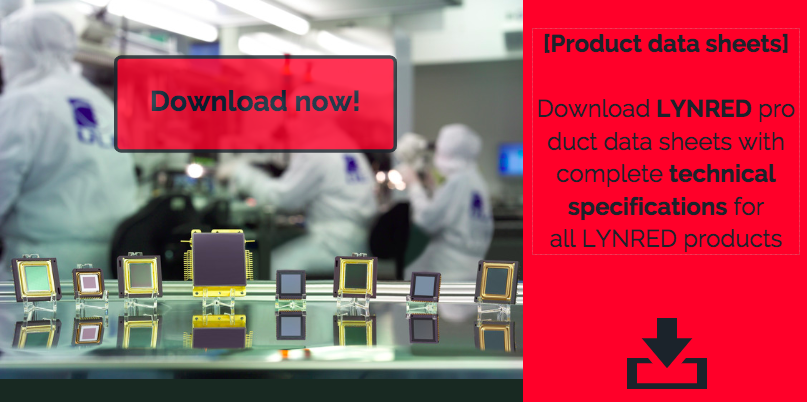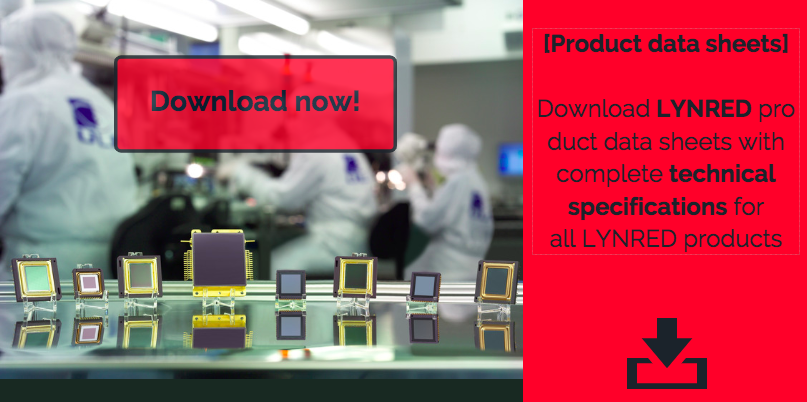There are a number of factors that influence thermal imaging sensor quality. These same factors will also determine the applications for which a sensor is particularly well-suited.
Operability is one of them. But what is operability, exactly? It is best described as the number of defective pixels or pixels whose behavior deviates too much from the average of the entire array.
Thermal imaging sensor operability in detail
Operability does not only apply to infrared technology. Visible-light sensors also have “dead” pixels. In fact, it is impossible to guarantee that 100% of the pixels in an array will be viable. Once a visible-light or infrared sensor has been integrated into a camera, defective pixels are corrected using image processing algorithms. In most cases, the same algorithms can be used for both visible and infrared imaging.
Typical infrared operability rates are between 99.5% and 99.8% (for LYNRED products). For a VGA-format (640x480 pixel) sensor, between 600 and 1,500 pixels will be defective.
Factors that can affect thermal imaging sensor operability
Damage to a pixel during manufacturing
There are several possible explanations for defective pixels. Each pixel is its own MOEMS (Micro-Opto-Electro-Mechanical System). It is made up of a thin membrane that is sensitive to temperature variations; this membrane is suspended above a read circuit. Even though the dimensions of an infrared pixel are very large compared to visible-light pixels (a visible-light pixel measures ≈ 1.2 µm, while an IR pixel comes in at around 12 µm to 17 µm), they are still tiny and, therefore, fragile. For example, the active membrane is several hundred angstroms thick (1 angstrom = 0.1 nm) and is suspended above a read circuit on a very thin bridge (typically 1 µm to 2 µm). The space between the membrane and circuit is also very small (around 2.5 µm).
The membrane is designed to withstand the significant impacts outlined in the main international standards (such as the US Military Standards). However, a pixel may not always be suspended properly throughout all of the steps in the manufacturing process. As a result, pixels can come into contact with the read circuit, creating either an inactive or sensitive area on the image. Depending on the testing parameters, the pixel could then be considered defective, affecting the sensor’s operability rate.

Clusters of defective pixels
A single pixel can be defective, as described above. However, several defective pixels can also be in contact with each other via their corners or sides. Then you have what is known as a cluster of defective pixels. Just like with an individual defective pixel, defective clusters must be corrected using algorithms implemented by the camera manufacturer. It is important to use information from pixels adjacent to the defective pixels to correct the image and to ensure that the scene displayed remains accurate. So, the size and shape of a cluster determines how easy it is to correct. A 3x3 cluster of 9 defective pixels, for example, will be difficult to correct because the center pixel is surrounded by other defective pixels, making it impossible to use the information from an operable adjacent pixel to correct the image. Therefore, operability is also affected by the maximum size of defective clusters.
The location of defective pixels
There are two final concepts that affect operability.
- The first is location. Depending on where individual defective pixels or clusters of defective pixels are located, the maximum number and cluster size will not be the same. Smaller cluster sizes will be required in the center of the array, which is where the user looks most often. As you move away from the center, larger clusters of defective pixels will be allowed.
- The second is “dead” columns or rows. A phenomenon that is becoming less and less common, but that does still sometimes occur, is an entire column or row of defective pixels. Like for individual pixels and clusters, an algorithm developed by the camera manufacturer must be used to correct this type of defect so that it does not show up in the final image.
Once again, a thermal imaging sensor’s operability rate is a crucial factor that can have a major impact on your final product. It is important to consider operability carefully in selecting a sensor for your project.
Look at different suppliers’ operability rates and ask potential suppliers about image processing algorithms.
To learn more about infrared detectors, download LYNRED product data sheets with complete technical specifications for all LYNRED products.












